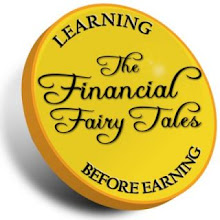The Global Approach to Financial Education
The Global Approach to Financial Education
Several countries, as follows, most of whom are members of the Organization for Economic Co-operation and Development (OECD), have developed and implemented national strategies on financial literacy.
Australia: In 2005, the government established the Financial Literacy Foundation (FLF) to implement a national literacy strategy. The creation of FLF was a key recommendation put forth a year earlier by the country's Consumer and Financial Literacy Task Force.
The FLF worked to integrate financial literacy into the educational system; to develop resources and support for teachers; and to provide financial literacy materials for the workplace.
In July of 2008, all of FLF's functions were transferred to the Australian Securities and Investments Commission, in order to consolidate the Australian government's financial literacy response under the Commission and to strengthen its role in safeguarding Australia's economic reputation and well-being.
Ireland: In 2007, the country's Financial Regulator embarked on a major study to assess the financial capability of Irish consumers. Largely based on the U.K. Financial Services Authority's survey, the face-to-face Irish survey took place between October 2007 and January 2008.
Although they were still in the early stages of their work, the regulator issued a Preliminary Report on Financial Capability in Ireland in June 2008. The final report has not yet been published. The broad objective of this work is to establish a baseline measure for financial capability, against which future research in this area can be compared.
Concurrently, under the supervision of their National Steering Group on Financial Education, Ireland has developed a Financial Competency Framework.
The Netherlands: Under the working title CentiQ, wijzer in geldzaken (Sensible with Money), around 40 partners from the financial sector, the government, information and consumer organizations and science, signed an agreement, in 2006, to work together on financial education. Together, the partners will carry out a strategic agenda that includes programs and projects aimed at improving the financial knowledge and skills of consumer and stimulating an active attitude, so that consumers can make conscious financial choices and become financially competent.
In 2007 and 2008, CentiQ carried out a number of studies and inventories in order to form a basis for the strategic agenda and the CentiQ Action Plan. All CentiQ programs are based on several strategic starting points, including:
•Household finances – These form the basis for all of the programs.
•Prevention is better than correction.
•The program is based on easily accessible and practical resources.
New Zealand: A Crown agency, the Retirement Commission, led the development of New Zealand's National Strategy for Financial Literacy, in 2008. The agency has also undertaken comprehensive "financial knowledge surveys", with the most recent being completed in 2009.
The New Zealand Retirement Commission also created Sorted (http://www.sorted.org.nz/), an independent government-funded organization dedicated to helping New Zealanders manage their personal finances, throughout their lives. In 2009 the Ministry of Education also took over all responsibilities for financial education in schools.
Singapore: The national financial education program, MoneySENSE, was launched in October 2003 to bring together industry and public sector initiatives in financial education, to create a long-term, sustainable program to enhance the basic financial literacy of Singaporeans.
The first National Financial Literacy Survey was conducted in March 2005. The survey found that, in general, Singaporeans have fairly healthy attitudes towards basic money management, financial planning and investment matters. Through its national MoneySENSE program, the Government of Singapore continues to support initiatives that enhance the basic financial literacy of consumers.
The United Kingdom: The Financial Services Authority adopted a National Strategy for Financial Capability in 2003. This strategy included a long-term, complex plan to target young people through new curricula, and savings accounts, to provide generic advice to the population at large, and to create new public programs for retirement savings.
Under the awareness portion of its National Strategy, the Authority has reached 8.4 million people, as of November 2009.
The United States: In 2006, the Financial Literacy and Education Commission created "Taking Ownership of the Future: The National Strategy for Financial Literacy". In addition to the 26 "calls to action" it published in its 2006 Strategy, the following year the Commission developed six new calls to action, where it wishes to concentrate its efforts.
In 2008, the President's Advisory Council on Financial Literacy was formed. In December 2009, the Departments of Treasury and Education outlined the first step in their efforts to promote financial capability among the nation's youth. Based on the findings of a new national financial capability survey, the National Financial Capability Challenge (http://www.challenge.treas.gov/) was created. This is a national award program, which aims to encourage financial education in schools across the country and recognize high-performing teachers, students and schools.
The OECD: In 2005, this 30-member group of countries published the first major international study on financial literacy.47 The study defined financial education, outlined the benefits of increased financial literacy and identified a life cycle of key decisions. In 2008, the OECD launched the International Gateway for Financial Education, which serves as the first global clearinghouse on financial education. It seeks to raise awareness; ensure a wide dissemination of research, best practices and guidelines; and build a worldwide network of government stakeholders on financial education.
Key Links
Australia
http://www.understandingmoney.gov.au/
Ireland
http://www.financialcapability.ie/
The Netherlands
http://www.wijzeringeldzaken.nl/
New Zealand
http://www.financialliteracy.org.nz/
Singapore*
http://www.moneysense.gov.sg/
The United Kingdom
http://www.fsa.gov.uk/financial_capability/
The United States
http://mymoney.gov/
The OECD
http://www.oecd.org/
From Leveraging Excellence: Charting a course of action to strengthen financial literacy in Canada
Labels: financial education, financial literacy


0 Comments:
Post a Comment
Links to this post:
Create a Link
<< Home